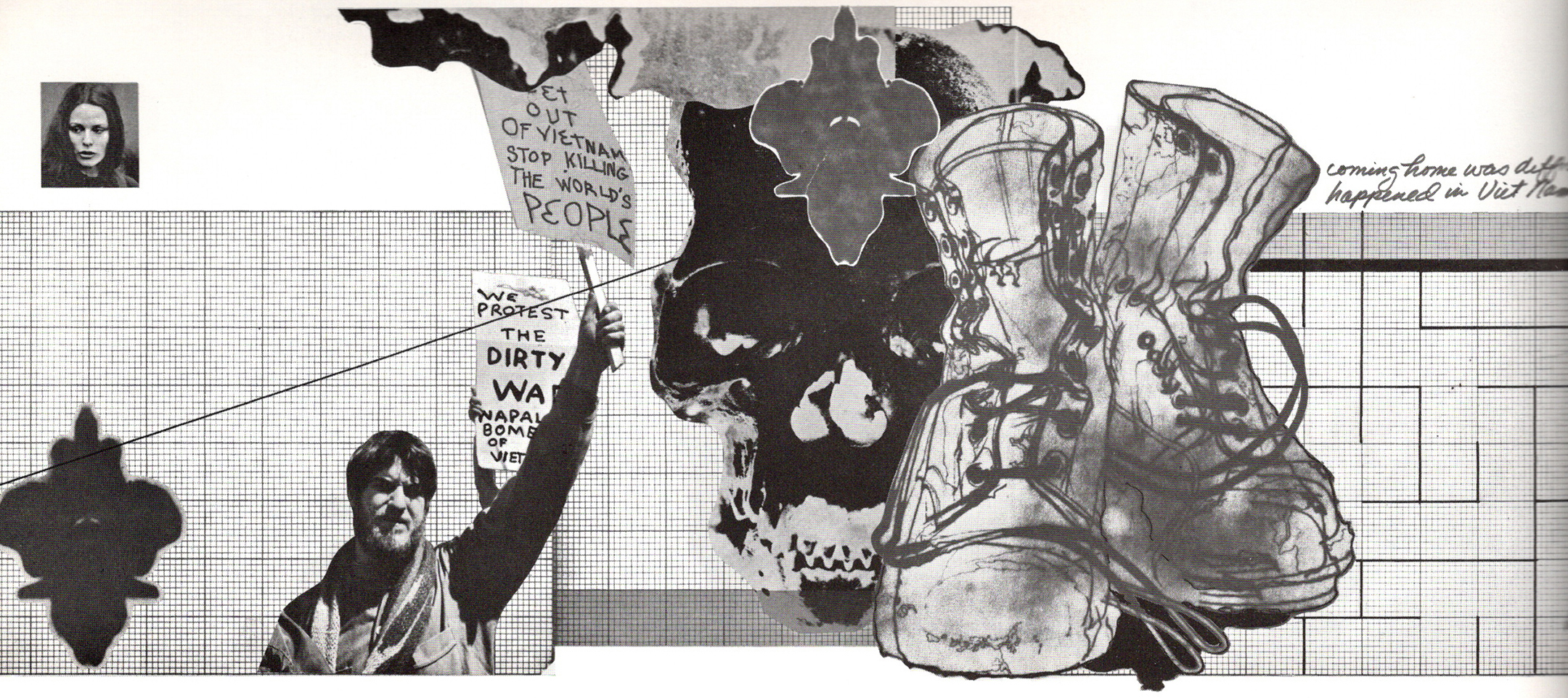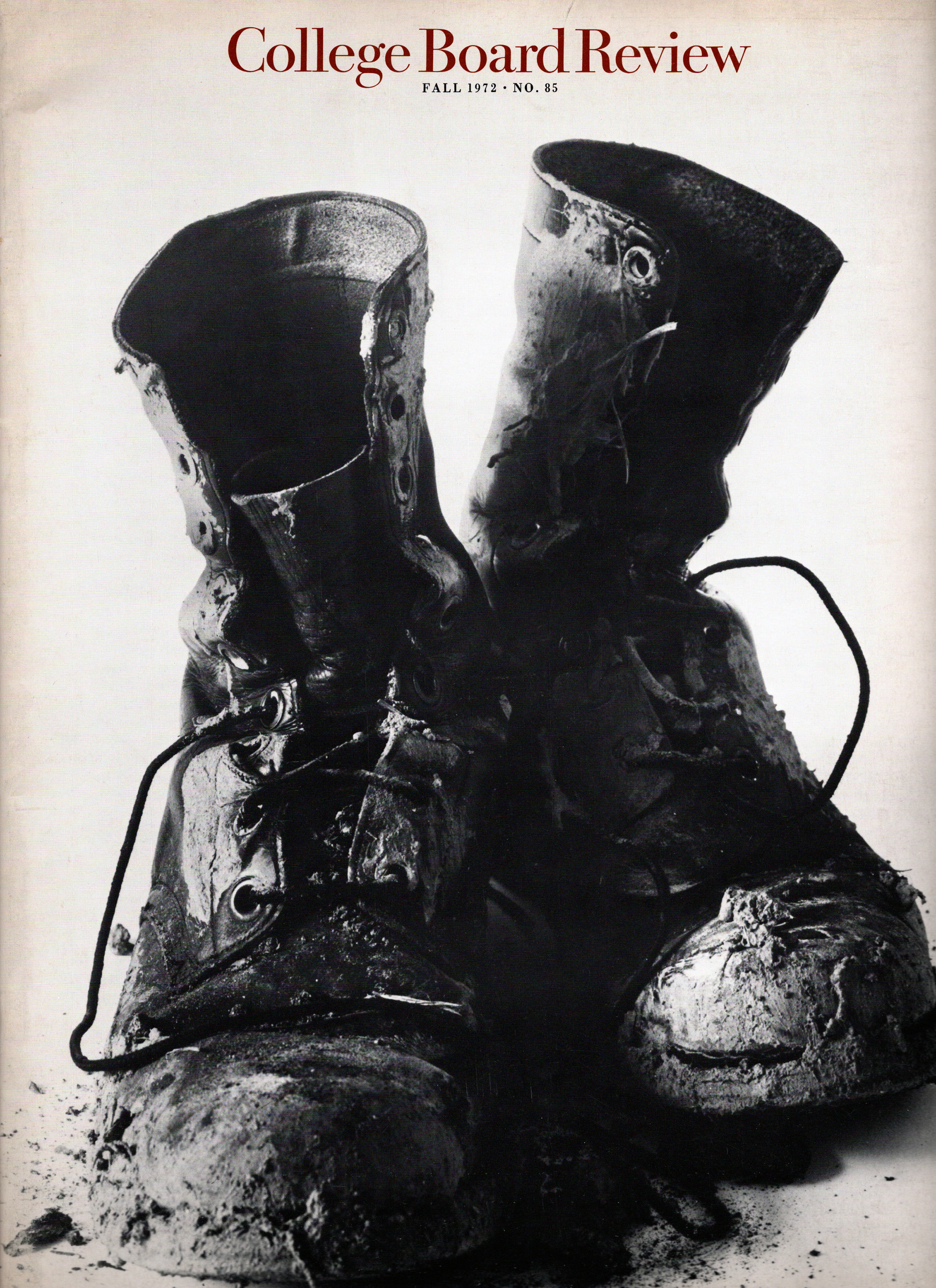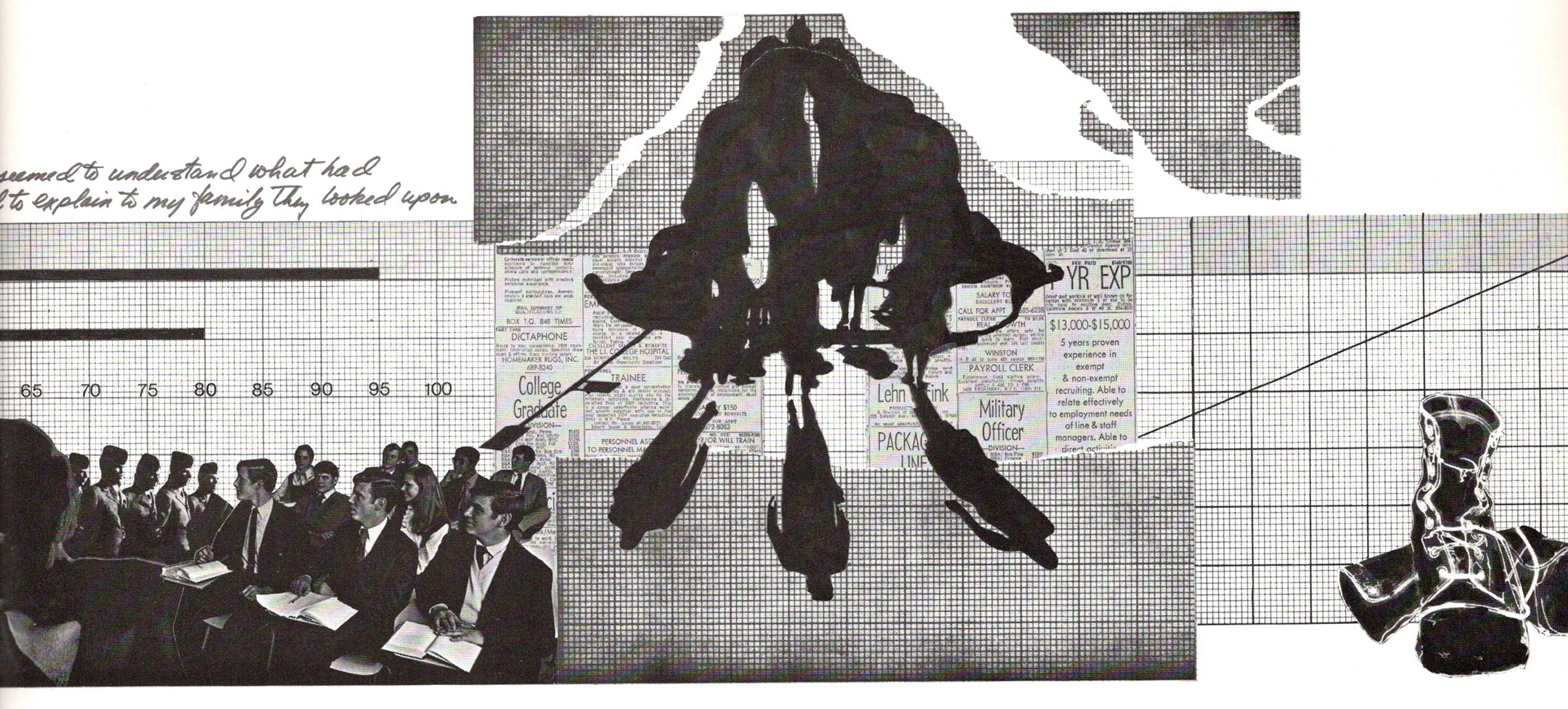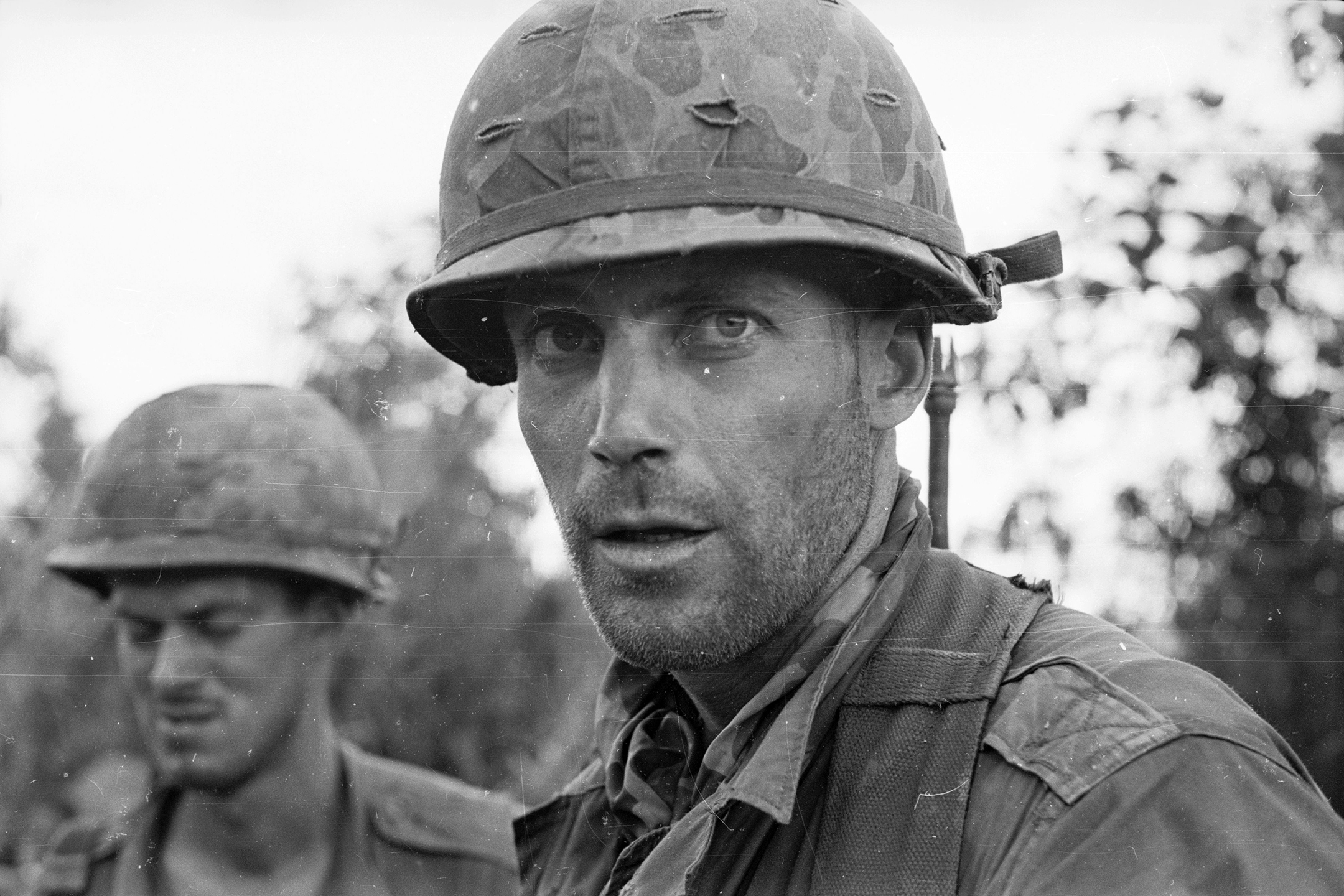
From the Archive
Vietnam Veterans in Higher Education: Their Special Problems, Their Hard-Earned Rights
In the Spring 1972 issue of The College Board Review, a counseling psychologist and technical supervisor of counseling at the Baltimore Veterans Administration office reckoned with the state of education opportunities for returning servicemen
The passage of the Servicemen's Readjustment Act of 1944—better known as the GI Bill—transformed America. While the law delivered a host of benefits (such as low-interest mortgages and small-business loans) to servicemen returning from World War II, it was the act’s education provisions that proved its most indelible legacy. Thanks to the bill granting tuition and living expenses, millions of military veterans suddenly had a chance to earn a high school diploma, attend a vocational school, or go to college. Along with the post-war boom in industry, the GI Bill helped elevate untold numbers (albeit not always equally, given the era’s systemic racism) into the middle class and fundamentally altered how Americans view and value higher education.
But during the Vietnam War era, cracks in the way colleges and universities engage with veterans revealed themselves. Despite a great percentage of Vietnam veterans using the GI Bill's education benefits (66%), higher-education institutions—roiled by anti-war protests, shifting priorities, and changing demographics—were ill-equipped to handle a surge of returning servicemen (especially those who were disabled) seeking an education while grappling with the toll of the war. “Many veterans are afraid of going back to college, afraid of exposing themselves to possible failure, afraid of rejection,” Stanley W. Stocker wrote in the Spring 1972 issue of The College Board Review. “[But] there are many things that can be done to show the returning veteran that educators are really interested in his well-being.”
Stocker, who was a Veterans Administration counseling psychologist and technical supervisor of counseling at the Baltimore Veterans Administration office, had firsthand experience with the specific challenges faced by Vietnam veterans—as well as the potential they brought with them in the classroom. His perspectives and guidance, while framed within the context of a war that had yet to reach its end, will seem dated in places. But the unfortunate reality is that too many of his recommendations resonate as necessary, as two similarly, seemingly unending wars continue to create veterans who can struggle to readjust to civilian life—especially when it comes to the classroom. Higher-ed institutions have certainly improved since 1972, but as this piece reminds us, there's still work to be done.

The lengthy involvement of the United States in Southeast Asia has produced approximately 5,524,000 veterans as of November 30, 1971.1 A total of approximately one million servicemen left the military during 1971. Many of these men have not yet been involved in any form of post-service education or training.
Veterans return to many readjustment problems which include, among other factors: high unemployment rates, military skills which are frequently not acceptable for transfer to civilian job markets, a sharp rise in the costs of education, the impact of any disability (physical or mental) on employability, and psychological shock.
Included in the disabled group are some 265,865 persons (as of October 21, 1971) who are now drawing compensation for their service-related disabilities. Many of these men would have died or would have suffered a greater frequency of total disability in previous wars. Swift evacuation, however, has made a major contribution in the saving of lives. In most cases it is only a matter of minutes from the time a serviceman is wounded until he is in a modern, well-equipped hospital.
Disabled veterans are usually in their early 20s or even younger. Like their nondisabled veteran counterparts, they reflect the economic and social diversity of America. Many of these young men are poorly educated and have not developed any marketable skills. Even though about 60 percent2 are high school graduates, much of what they have learned may have faded.
The successful adjustment of disabled (as well as the nondisabled) Vietnam veterans depends upon many factors other than physical limitations. It depends to a great extent upon their becoming motivated to overcome negative feelings about education and taking advantage of educational and job training opportunities. When first discharged from the service, returning veterans are primarily involved in learning to cope with the new situations in which they find themselves. The problem is how to motivate and encourage these men to increase their opportunities for a fuller life through more education and training. They have already demonstrated valor and worth. Now they need our active concern. If we show concern, hopefully more cases like the following may result.
Motivation can help
A veteran I'll call Ted B. is a good example of how motivation can help. A handsome black man, he lost both of his legs and one arm when he stepped on a landmine near Da Nang. He was just 21. He relates that much of the following year was spent in despair. A product of the Chicago ghetto, just barely a high school graduate, a year or so of gas station work, a wife and two children—he possessed an unlikely combination of traits for success.
A number of people cared and reached him. His wife believed in him and needed him. Ted was being treated at Walter Reed Hospital. An experimental program brought college presidents to the hospital at their own expense to encourage veterans to seek further education. This showed the veterans that people cared what happened to them. A number of these presidents talked with Ted at his bedside and encouraged him to tackle further education. A Veterans Administration counselor also spent many hours talking with him at the hospital.

Jobs for progress
The combination worked. Ted spent over a year reviewing the basic learning skills that he would need for college. He is now a full-time student at a community college near Washington, D.C. He drives his own car and enjoys tinkering with it. He has another child. He is working for himself and his family toward a more hopeful future.
Ultimately, the success of this Vietnam veteran and others as well depends upon their obtaining the kind of employment that interests them. Without a job in which the veteran can progress, prosper, and begin to have positive feelings about himself, his sacrifices for his country may seem to him to have been wasted.
A major education problem for the veteran is the fact that many colleges maintain strict admission standards untampered by the fact of high veteran achievement after World War II. William G. Shannon, the associate executive director of the American Association of Junior Colleges, has said, "The growth curve of American higher education has climbed more sharply since the end of World War II than in any comparable period. Thousands upon thousands of individuals have flooded into the colleges and universities, demanding more and greater variety of education services than ever before.
"After World War II, veterans formed the mainstream of these new students and over the past 25 years they, more than most people, have been identified as the strongest influence in altering both the shape and nature of the colleges and universities.
"First, their record of academic accomplishments set a new high watermark in education and helped to ventilate a lot of old institutions with the breath of fresh ideas about who ought to go to college, how they should act when they get there, and how colleges can respond to student demands for relevancy in education. The colleges benefited and the veterans benefited, as did all other students served by the colleges.
"While the present period in time is not a repeat of the 1940s and 50s, there are similar elements and similar opportunities."3 Current statistics from the Department of Health, Education, and Welfare show, however, that only 34.5 percent of the 5½ million Vietnam-era veterans have used their GI Bill benefits. This utilization rate is lower than that of veterans of either World War II or the Korean conflict.
Some Review readers may recall the World War II influx of veterans and the response of the colleges—emergency housing, special loan funds, special work projects, variances in admission procedures, and other unique measures. How many Review readers are connected with institutions today that actively enroll and help the veteran who does not have the "right" qualifications, test scores, skills, and money?
Each school has to determine its own course. Hopefully, each will review admission and recruitment procedures to see if they reflect the policy of the college with regard to the returning veterans and concern for them.
Some veterans have been "turned off" by their previous educational experiences. A letter of invitation alone cannot overcome these feelings. To educators, admission procedures may seem reasonable and clear. To the veteran they may contribute to his fear of placing himself in a new situation in which failure is possible. On some campuses, counselors have found it helpful for newly arriving veterans to talk with members of veterans' clubs at the college. Often club members are willing to go into the community to seek out newly returned veterans and discuss the possibility of further education and the mechanics of admission.
Government programs
There are three basic programs of educational aid offered by the government through the Veterans Administration. The disabled veteran receives a subsistence allowance in addition to direct payment to the college for his tuition, fees, required books, and necessary supplies. The nondisabled veteran receives his subsistence payments alone through the so-called G.I. Bill. From these payments, he is expected to pay for his education and support himself. It should be noted that the intent of Congress was that these payments were to cover some, but not all, of the cost of the veteran's education.4 The GI Bill veterans usually need assistance from the college to find part-time work, or short-term loans until the government checks come in. The third program provides educational assistance to children and wives of veterans who are permanently and totally disabled, and to children and widows of some deceased veterans.
Many veterans have found they are being evaluated on their high school or college transcripts which are 5 to 10 years old or more. They see no effort to determine who they are, what they feel, and what they can do today. Rather, they feel that decisions to admit or reject them are based upon records of performance which are, perhaps, no longer meaningful in light of experience and maturity gained in the interim. Almost every returning veteran will find himself behind in educational level and progress as well as job experience when compared with the men his age who didn't go into the service. Disabled veterans are especially conscious of this. Their added maturity and experience aren’t necessarily considered.
Fighting to compete
A 27-year-old captain who was severely wounded in Vietnam explains: "Something happened to me when I got hit, and now I've got this tremendous motivation to succeed. Besides, I know that I've got to be motivated. I've got to fight to compete with guys with two legs."
Most educators have seen what intense positive motivation can do for a person whose paper credentials aren't necessarily up to the standard the college would prefer.
Many veterans are afraid of going back to college, afraid of exposing themselves to possible failure, afraid of rejection. Tom B., a captain from Louisville, Kentucky, commented upon his college career prior to the service: "I goofed off. I was in college to avoid the draft. I enjoyed the girls and the drinking. I flunked out and got drafted and found myself in Vietnam. Then I lost an arm and a leg in the war. Today, my marks from my first try at college aren't important. What's important is my attitude today. I want to know that I can and will be just as good, if not better, than the other guy. But I'm not sure that I will get my chance to prove this."
Some colleges are using open-admissions policies to give veterans a chance to prove themselves. Others are admitting them as special students until they prove their academic capabilities.
It is important, too, to consider admissions testing. Does it give an accurate picture of the 18-year-old veteran who had to grow up quickly to survive? Are his norms comparable to the new high school graduate? If a student's previous schooling did not include new math, will he still be tested on it? Do results prove anything, other than the fact he never studied “new math”? Whatever tests are required should be used with a sound psychometric perspective; results should be interpreted in a way which is valid for the person who has had his education interrupted, as well as for the one who has not.

Look at the person
It is helpful to look at the person himself. One young man, Steve H., two days following radical surgery gathered the strength and had the determination to take a Law School Admissions Test (LSAT) on the required schedule. He was rejected by the law school of his choice.
Steve said, "I've been out of school for over a year. I'm not afraid of going back to college in a wheelchair, but I can't even get into law school. When I applied, they told me to take the Law School Admissions Test. I took it here at the hospital. I scored badly. That stopped further consideration of my application. Is that all I'm going to be judged on—paper qualifications?"
At the least, such a man deserves a chance to prove he can meet course requirements.
Some state scholarship programs are based upon competitive examinations with standard tests like the SAT. A veteran who has been away from school for several years rarely can compete successfully against those coming directly from high school. In effect, such rigid requirements by some colleges and universities discriminate against veterans and others who have had an interruption in their education.
Another area of admissions procedures which deserves attention is the requirement of references for persons who have been out of high school for a prolonged period of time. For example, Joe L. came out of service after 20 years of active duty. He was 38 years old. He wanted to start a second career and go to college. His SAT combined scores totaled over 1200. The school processed his application and wrote that all admission requirements were met except for a required letter of recommendation from his high school counselor.
He wrote the school and was told that the counselor was dead, that the high school kept no personal data on students after five years from graduation, and that no one there knew him well enough to write a letter of recommendation. The college answered with a mimeographed form letter: "We cannot consider your application for admission any further until we receive your letter of recommendation from your high school counselor." The Veterans Administration counselor for Joe called the dean of admissions who said, "It's our policy, not my decision." The veteran was rejected. Joe was embittered. It took long hours of counseling over an extended period of time before he was able to consider attempting admission to any other college.
Some schools with an open-admissions policy for veterans and other adults do not seem to be aware that admission is considered by some students to imply that the college, having reviewed their records, considers they will be successful in their studies. When the decision is made to admit a student who may be academically weak, the college should be candid in advising the student of his status and in recommending, when necessary, remedial or review work. There should be opportunities for students to receive help in sharpening academic skills. Given the facts about the steps they must take in order to succeed, and encouraged by counselors, most young adults will deal with their academic problems in a realistic manner.
Different approaches
The community colleges and four-year colleges that have developmental programs have generally held that such programs are only successful when they differ as much as possible from earlier approaches in high school and are designed for adults.
English and mathematics are basic in developing study skills. Provisions need to be made for review work for sequence courses in fields such as the sciences and mathematics, if the initial coursework has been taken some time ago. Physics I, studied 10 years ago, will rarely provide the needed basis for Physics II today. Although the same reasoning holds true in many fields, it is especially so in engineering, math, and sequential science courses.
Returning veterans who have a high school diploma or a high school equivalency certificate may be given review or refresher work (if required as a condition for college admission), without charge against entitlements. The non-high school graduate is also entitled to a coursework review to prepare him for the high school equivalency certificate examination. Students who are veterans will be paid by the Veterans Administration at the same rates they would receive for regular study while in school.
Every veteran is entitled to counseling on request at no charge. This is provided at the nearest Veterans Administration regional office or at a counseling center under contract to the Veterans Administration. These are usually located in institutions of higher learning. Only a small percentage of GI Bill veterans seek counseling. Some colleges have appointed a veterans' service coordinator who assumes responsibility for whatever services the college wishes to provide and the veterans are interested in. This coordinator can become a helpful force in the prevention of failure. He can establish a personal contact with the nearest Veterans Administration office or center for referrals, coordination of the GI Bill tutoring services, and so on. Some colleges have offered the services of their counseling center to returning veterans in the colleges local service area. Many counseling centers have found it worthwhile to assign one of their younger counselors the job of working with the returning veterans.
Readjustment problems
Some veteran readjustment problems have already been identified. Once in college, some veterans find problems with the responses of their own age group. A recent study found that "the veterans' own contemporaries (ages 18-29) express views that are somewhat more critical of the veteran than the general public."5 The unpopularity of the Vietnam war places an additional burden upon the returning veteran, especially if his initial experiences are negative in terms of his reception by the American public. If immediate counseling can be made available when he feels the initial impact of readjustment, it could be extremely helpful to him. Effective referrals can be developed in advance through the nearest Veterans Administration regional office and its Vocational Counseling, Training, and Adjustment Section.

Ian Brodie/Express/Getty Images
American soldiers in Vietnam, during the Vietnam War, June 27, 1966.
Showing interest
There are many things that can be done to show the returning veteran that educators are really interested in his well-being. The following are only a few of the possibilities.
1. Many of the educationally disadvantaged are not comfortable with printed forms. This group may need extra assistance and encouragement.
2. Once a veteran is accepted in any educational institution, that institution should accept responsibility for providing opportunities to remedy any lack of basic academic skills. Offerings of developmental coursework in English, mathematics, how to study, and so forth, can help anyone who has been out of school for an extended period of time.
3. The whole area of credit for service experiences should be considered. Cornelius Turner's "A Guide to the Evaluation of Educational Experiences in the Armed Forces" (American Council on Education, 1968) provides acceptable guidelines. The use of the College-Level Examination Program® (CLEP®) and other examinations should be considered, especially in light of the interest in the "University Without Walls" concept and other new ideas in undergraduate education. The experience of the Open University in England, with its 25,000 students who study by radio, television, and through local seminars, could provide interesting facts and insights into this area. (See page 11, Open University in the United States.)
4. Colleges should show a real concern for the hospitalized servicemen and veterans by contacting the heads of nearby hospitals and requesting meetings to discuss educational needs and to explore ways in which the college might assist in meeting them.
5. Consideration should be given to making visits to nearby Veterans Administration and military hospitals to talk with the patients in the wards to encourage them to consider more education. The emphasis has to be on education in colleges or some other sound form of training. When a hospital patient gets this type of encouragement from college administrators (deans and presidents), he clearly gets at least one message—"Someone in authority cared enough about me to come here and talk directly with me." Many men are badly injured, and these visits can help them toward a positive attitude about the future.
6. Each institution should determine if its campus is fully accessible to wheelchair patients and other seriously disabled persons. Technical suggestions may be obtained by writing to The Secretary, The President's Committee on Disabled Veterans, Washington, D.C. 20210. The local Veterans Administration Office or Center and the state Vocational Rehabilitation Department may be able to help also.
7. Many Veterans Administration personnel have visited campuses to talk to appropriate groups such as counseling center staffs, admissions staffs, veterans clubs, and so on. Their help might be requested by a college.
Many of today's "now" generation are doubtful about the ability of existing agencies (including educational institutions) to respond to their interests and needs. Let us listen and respond fairly, logically, sensibly, and with warm concern for our young men home from the war.
Notes:
1. Veterans Administration, Information Bulletin 1 DVB, LB. 24-72-1, June 18, 1972, page 3.
2. "Data on Vietnam Veterans, Reports and Statistical Service," Office of the Comptroller, Veterans Administration, June 1971.
3. W G. Shannon, Address, The Veteran's Administration National Task Force of the Education of the Vietnam Veterans, January 11, 1972.
4. Title 38 U.S. Code, added by Public Law 89-358, amended by Public Law 91-219, amended by Public Law 91-584.
5. Lewis Harris Study #2131, prepared January 1972 for the Veterans Administration.


